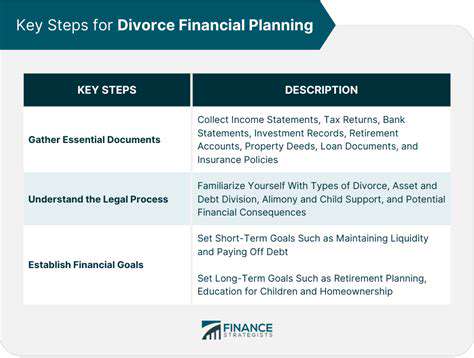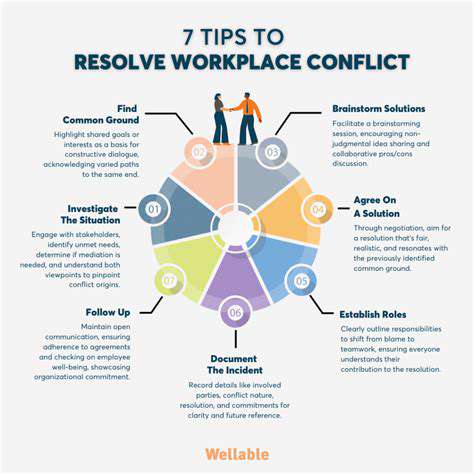effective co parenting communication strategies
Defining Clear Communication Goals for Co-Parenting
Setting Shared Expectations
Successful co-parenting starts with crystal-clear expectations about how parents will communicate. Both parents need to align on how often they'll talk, which methods they'll use, and what topics they'll cover. Writing these agreements down, revisiting them periodically, and tweaking them as circumstances change is crucial. Imagine a family deciding to have weekly phone calls to go over their child's schedule and upcoming events, while saving emails for less urgent matters. This structured method cuts down on confusion and builds teamwork, which is absolutely vital for the child's happiness and the smooth operation of the co-parenting relationship.
Creating specific communication objectives—like making sure both parents give the child consistent messages about rules and routines—can make a real difference. This demands honesty and openness in all discussions, ensuring both parents understand the child's needs and growth. Talking openly about discipline, schoolwork, and extracurricular activities helps parents present a united front, creating a stable, supportive environment for the child.
Choosing Appropriate Communication Channels
Picking the right ways to communicate is a game-changer for co-parenting success. While phone calls work well for quick conversations, email might be better for detailed updates. Texting? Save that for short, simple messages like schedule changes. Knowing the strengths of each channel and using them wisely prevents misunderstandings and keeps the tone respectful. Always think about how urgent the message is and whether you need a written record before choosing how to share it. For big decisions—like those about the child's health or education—opt for a phone or video call to make sure everything's clear.
Steering clear of social media or other public platforms when talking to your co-parent is another smart move. Keeping conversations private and child-focused stops conflicts from blowing up and shields the child from unnecessary drama. This commitment to respectful, private communication builds a healthier co-parenting dynamic, which benefits everyone—especially the child.
Focusing on the Child's Needs
At the end of the day, every communication strategy in co-parenting should center on the child. That means keeping the focus on the child's well-being and avoiding the temptation to turn conversations into battlegrounds for personal grievances. Discussions should revolve around the child's schedule, activities, and emotional needs. Parents should work together to create an environment where the child feels loved and secure, no matter what challenges the co-parenting relationship faces. Regular check-ins and open talks about the child's progress and any concerns can strengthen collaboration and mutual respect between parents.
Keeping communication child-focused ensures the child's needs come first while preventing conflicts between parents from escalating. This child-centered approach is the foundation of effective co-parenting, creating a stable, nurturing space where the child can thrive.
Putting the child's needs at the heart of communication helps both parents stay on the same page about developmental milestones, emotional needs, and any challenges the child might be facing. This shared understanding, built through open dialogue, leads to better co-parenting strategies and a more positive experience for the child.
Establishing a System for Consistent Communication

Defining Consistent Standards
Building a system for reliable communication starts with setting clear standards. This means spelling out step-by-step procedures for every task, making sure everyone knows what's expected, and putting a strong monitoring system in place to ensure those standards are met. This detailed framework guarantees predictable, high-quality results every time. These standards should be written down and easy for all team members to access.
Communicating these standards clearly is key to making them work. Regular training sessions and easy-to-find documentation help team members grasp their responsibilities and what it takes to deliver consistent results. This also creates a space for addressing questions or concerns as they come up.
Implementing Tracking and Monitoring Mechanisms
A solid system for tracking performance is essential to maintain consistency. This means setting up key performance indicators (KPIs) that measure how well the team is sticking to the established standards. These tracking tools help teams spot areas for improvement and make proactive adjustments. Analyzing data plays a big role in identifying trends that can fine-tune the system over time.
Regularly reviewing performance data keeps the system effective. This helps catch inconsistencies or deviations from the standards early, allowing for quick fixes. Ongoing evaluation ensures the system adapts to changing needs and stays effective.
Enhancing Communication and Collaboration
Clear, open communication channels are the backbone of consistency across any organization. This means setting up straightforward ways for feedback, suggestions, and reporting issues. Strong communication keeps everyone in the loop about progress and any changes to procedures. It also fosters a collaborative environment where team members feel comfortable voicing concerns and offering solutions.
Encouraging input from team members at every level is vital. This feedback loop drives continuous improvement, highlighting areas where the system can be refined. Regular meetings and collaborative platforms make this feedback process work smoothly.
Establishing a System for Continuous Improvement
A truly effective system for consistency requires a commitment to never stop improving. This means creating a framework for regularly assessing the system's effectiveness and finding ways to make it better. This includes gathering feedback from all stakeholders, analyzing performance data, and evaluating how well current procedures are working. Continuous improvement boosts efficiency and reduces errors, leading to higher-quality outcomes.
Setting up a feedback loop for ongoing improvement is critical. This allows for constant evaluation and tweaks to processes based on feedback and performance data. This proactive approach keeps the system flexible and responsive to the organization's evolving needs.
Navigating Difficult Conversations with Respect and Clarity
Active Listening and Empathy
Successful co-parenting depends on handling tough conversations with respect and clarity. A big part of this is active listening—really hearing what the other parent is saying, not just waiting for your turn to talk. It means making an effort to understand their perspective, acknowledging their feelings, and validating their concerns. This requires setting aside personal biases and focusing on the message, even when it's hard to hear.
Showing empathy is equally important. Empathy lets you see things from the other parent's point of view, recognizing how the conversation might affect them emotionally. It's about acknowledging their feelings, even if you disagree with their stance. For example, if your co-parent is upset about a scheduling conflict, instead of immediately defending your position, try to understand why they're frustrated. You don't have to agree, but acknowledging their feelings and working toward a solution that respects both perspectives goes a long way.
Establishing Clear Communication Protocols
To keep difficult conversations respectful and productive, setting clear communication rules is essential for effective co-parenting. This means agreeing on boundaries for communication, including acceptable tones and language, and deciding on the best ways to share important information—whether through email, texts, or face-to-face meetings.
These protocols should also include a plan for handling disagreements. This might mean scheduling a specific time to talk through issues or agreeing to mediation if needed. Having this structure in place prevents misunderstandings and stops conflicts from turning personal, ensuring disagreements are resolved constructively.
A key part of these protocols is recognizing each parent's need for a safe, respectful space to discuss tough topics. This means avoiding emotionally charged language, steering clear of blame or criticism, and keeping the focus on the child's needs.
Agreeing on a specific time and place for discussions, minimizing distractions, and making sure both parents feel heard are all critical steps in creating effective communication protocols.
Quick check-ins about the child's well-being and any concerns—even if they're brief—are also part of this system. These regular touchpoints can prevent small issues from becoming big problems and foster a sense of partnership.
Documenting Agreements and Decisions for Transparency and Accountability

Importance of Documentation
Thorough documentation of agreements and decisions is non-negotiable for maintaining transparency, ensuring accountability, and creating a reliable reference for the future. Clear, concise records of agreed terms outline responsibilities and expectations for everyone involved. This prevents misunderstandings and provides a go-to resource for future questions or disputes. Proper documentation also boosts organizational efficiency by cutting down on time spent clarifying ambiguities or resolving conflicts.
Keeping accurate records of decisions—especially those affecting strategy, operations, or finances—is critical. These records provide context for past actions, enabling smarter decisions moving forward. Documentation helps stakeholders understand the reasoning behind decisions, building trust and collaboration. By documenting agreements and decisions, organizations strengthen governance and improve overall effectiveness.
Best Practices for Documentation
Effective documentation follows specific best practices. First, clarity and precision are non-negotiable. Using straightforward language and defining key terms prevents misinterpretations and ensures everyone understands the agreements. This includes clearly outlining the scope of the agreement and each party's roles and responsibilities. Consistency in format and style across all documents makes them easier to reference and understand.
Date stamping and version control are also essential. This ensures records are traceable and any updates are clearly marked. Keeping all agreements and decisions in a centralized repository makes them easy to find. This system should include a robust search function to quickly locate specific information, saving time and effort.
Using standardized templates for common agreements and decisions streamlines the documentation process. These templates can pre-fill key details, ensuring consistency and reducing errors. Regularly reviewing and updating documentation keeps it accurate and relevant as situations change. This proactive approach ensures documentation stays current and useful.
Adding metadata like keywords, tags, and categories makes documents easier to search, especially in large organizations with numerous records. This structured approach helps users find what they need quickly and efficiently.
Read more about effective co parenting communication strategies
Hot Recommendations
- divorce asset division legal checklist
- how to overcome breakup shock step by step
- divorce self growth strategies for single parents
- how to overcome divorce trauma quickly
- emotional recovery tips for breakup survivors
- divorce breakup coping strategies for adults
- how to find effective divorce counseling online
- divorce custody battle resolution strategies
- how to find affordable breakup counseling services
- best co parenting solutions for divorce cases











